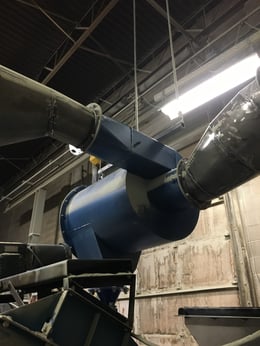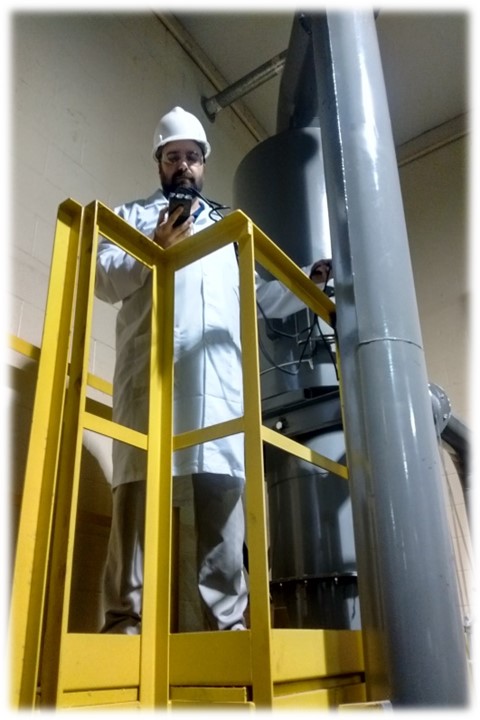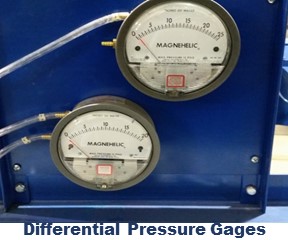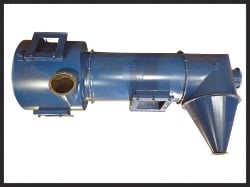Designing a dust collection system can be quite a daunting task. With so many collector options and so many application variables to consider, it is difficult to know where to begin. Cyclones are among the oldest and still most reliable methods of dust collection available. Because they require very little maintenance, have low up-front cost, and offer unmatched versatility, cyclone collectors remain a viable solution to many air-handling challenges. Although heightened environmental regulations and collection efficiency needs have shifted industry toward the use of filter-media collectors, cyclonic dust collection still plays a vital role in many air-handling systems. These five questions will help determine if a cyclone dust collector is right for your application.
- How big is my dust?
Cyclonic dust collection relies on inertial forces to separate dust particles from an air stream. The larger and denser the particulate is, the greater its inertia. This is the reason cyclones have such high collection efficiencies when handling relatively large dust particles.
- How much dust is too much?
Grain loading or dust loading refers to the amount of dust particulate that is suspended in a gas stream. This is typically measured in the number of grains per cubic foot of gas. This is an important number to consider when designing a pollution control system. Not only will this factor into the size requirement of a dust collector, but it will also determine the appropriate type of dust collector. The strict air pollution control standards in the United States often necessitate a “filter-media” dust collector, such as a bag house, for the final collection stage.
- Can I reuse the dust I am collecting?

Dust generated by handling dry bulk materials can be hazardous but also valuable. Unfortunately, most filter-type dust collection systems are designed for disposal rather than product reclamation. Filter media collectors such as cartridge filters and bag houses often do not allow collected particulates to be recovered for reuse due to contamination or particulate size issues.
- Do I have heat or humidity concerns?
Air handling in manufacturing processes is often a delicate balance with a number of variables to contend with. Process heat and humidity in the air stream create a difficult challenge when it comes to dust collection. Collection of red-hot dust particulate is simply not possible with many bag houses because cotton filters are flammable and flame retardant filters can be costly. - How much should I spend?
Perhaps the most important and most difficult question asked when designing a dust collection system is how much to spend. The simple answer is, it depends. It depends on what the overall goal of the system should achieve. The best dust collection systems are those that were designed with several functions in mind: capacity, operation costs, maintenance costs, and product/ material value.
To learn more about which dust collector, please contact our experts at 440-543-7400 or visit our website: www.dustcollectorhq.com.
To improve efficiency and safety, there is no substitute for an on-site inspection by an experienced expert. Click below to start with a free 20-minute phone consultation by clicking the button.














